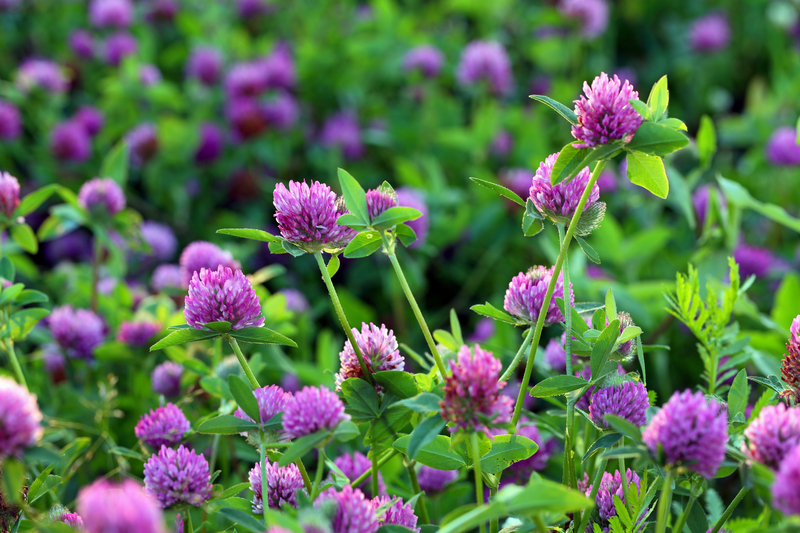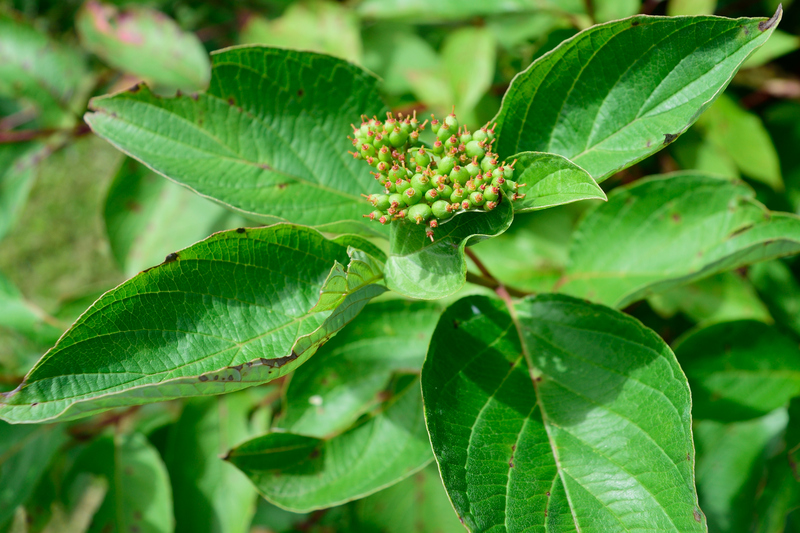Container gardening for small spaces
Posted on 26/08/2025
Container Gardening for Small Spaces
Living in a city apartment or a house with a petite balcony doesn't mean you have to forgo the joys of gardening. Container gardening offers an excellent solution for gardeners with limited space, allowing anyone to create vibrant, lush green sanctuaries in the smallest of areas. In this comprehensive guide, we'll explore everything you need to know about container gardening for small spaces--from choosing the right containers and soil to creative layouts and plant selection.
Whether you're a beginner or a seasoned gardener looking to optimize a tiny space, this article is packed with expert advice and actionable tips.

Why Container Gardening Works Wonders in Small Spaces
If you have a balcony, patio, window sill, doorstep, or even just a sunny spot inside, you have potential for your very own container garden. Here's why this form of gardening is ideal for small areas:
- Portability: Move your plants to catch the sun, avoid frost, or redesign your space whenever you wish.
- Space Optimization: Utilize vertical arrangements, stairs, and railings to expand your possible planting area.
- Control: Manage soil quality, moisture, and drainage with precision--perfect for varied plant needs.
- No Digging Required: Avoid the hassle of digging and weeding typical in garden beds.
- Adaptability: Grow anything from vegetables to flowers, herbs, and even small fruit trees.
Choosing the Best Containers for Your Small Garden
A successful small space container garden starts with choosing the right pots. Here's what to look for:
1. Size Matters
*Larger containers retain moisture better and give roots room to grow.* However, don't overlook smaller pots--they're great for annuals and herbs. When limited by floor space, consider stacked or tall containers to maximize vertical dimensions.
2. Material Options
- Terracotta: Classic and breathable, but dries out more quickly. Great for drought-tolerant plants.
- Plastic or Resin: Lightweight and typically more affordable, these don't dry out as fast.
- Ceramic: Decorative and stylish, but ensure pots have proper drainage holes.
- Metal: Modern-looking, though they can heat up quickly in the sun--best for short-term displays.
- Fabric Grow Bags: Excellent for root aeration and folding away when not in use, these are perfect for vegetables.
3. Drainage is Key
All containers must have adequate drainage holes to prevent waterlogged soil, which could lead to root rot. If your favorite pot lacks holes, drill some before filling it.
4. Creative Container Ideas
Think beyond traditional pots! Old buckets, crates, tin cans, teapots, and even rubber boots can be reused as planters, transforming your mini garden into a unique showpiece of sustainability and style.
Choosing the Right Soil for Container Gardens
The soil you use in containers is different from what's in a typical garden bed. For the healthiest plants, use a premium potting mix designed for containers rather than regular yard soil.
- Look for well-draining potting mix that contains perlite, vermiculite, or peat moss for aeration and moisture balance.
- If growing vegetables, choose an organic mix that includes natural fertilizers or amend with compost.
- For succulent container gardens, select a specialized cactus and succulent soil to prevent root rot.
Refreshing potting mix annually and making use of slow-release fertilizers will ensure your container plants stay healthy and productive.
Best Plants for Container Gardening in Small Spaces
Selecting the right plants is essential for a thriving small space container garden. Consider the available light (sun, partial, or shade), your climate, and what you want to harvest or display. Here are some ideal options:
Edible Container Gardens
- Herbs: Basil, thyme, rosemary, mint, and chives do well in pots.
- Salad Greens: Lettuces, arugula, spinach, and kale grow quickly and can be harvested regularly.
- Tomatoes: Dwarf and cherry varieties thrive in containers with cages or stakes.
- Peppers: Both sweet and hot peppers grow well in small pots.
- Root Crops: Try radishes, carrots, and beets in deeper containers.
- Strawberries: Hang or stack pots for a vertical berry garden.
Ornamental Container Gardens
- Annual Flowers: Marigolds, petunias, pansies, and impatiens provide season-long color.
- Perennials: Hostas, ferns, and lavender work well for shade or sun.
- Bulbs: Daffodils, tulips, and lilies offer spring beauty in pot arrangements.
- Vining Plants: Sweet peas, morning glories, and climbing nasturtiums utilize vertical space with ease.
Compact Fruit Tree Varieties
*Yes, you can even grow fruits in containers!* Look for "patio" or "dwarf" varieties of figs, citrus, or apple trees in large pots.
Design Tips for Maximizing Small Space Container Gardens
When every inch counts, good design is crucial. Here are some container gardening strategies to make your small garden look lush and inviting:
Vertical Gardening
- Wall-mounted planters: Use shelves, racks, or pocket planters to utilize walls or balcony railings.
- Hanging baskets: Suspend from ceilings, hooks, or pergolas to add greenery overhead.
- Stacked pots: Tower arrangements or ladder shelving create visual interest and multiply space.
Vertical gardening is an essential element in container gardens for urban spaces--it makes the most of available sunlight and adds layers to your green retreat.
Group Your Containers
Cluster pots of various sizes to create a dynamic display. Place taller plants at the back, trailing varieties up front, and mix colors and textures for a modern mini-landscape.
Consider Mobility
Use wheeled pot caddies or lightweight containers so you can easily rearrange your space, access hard-to-reach areas for cleaning, and move delicate plants indoors when temperatures drop.
Color and Texture Play
- Match your containers and plants to your home decor--mix bold or pastel colors.
- Alternate spiky, trailing, and bushy varieties for visual balance and intrigue.
How to Care for Container Gardens in Small Spaces
Maintaining a container garden in a limited area requires extra attention. Here's how to keep your plants healthy and thriving:
Watering
- Containers dry out faster than garden beds; check soil moisture daily, especially during hot weather.
- Water deeply until you see it draining from the bottom, but never allow pots to sit in excess water.
- Self-watering planters can help if you're busy or travel frequently.
Feeding
Most potting mixes run out of nutrients within a few weeks. Supplement with a liquid fertilizer every 2-4 weeks, or use a slow-release granular blend appropriate for your plant selection.
Pruning and Upkeep
- Remove spent flowers or yellowing leaves promptly to encourage new growth and avoid disease.
- Re-pot crowded plants to prevent root-bound conditions and promote healthier growth.
- Watch for pests (like aphids or spider mites) and treat organically or with insecticidal soap if needed.
Seasonal Adjustments
Your small garden will evolve with the seasons. Switch out cool-season flowers for summer blooms, and move tender plants indoors before frost. With container gardening, seasonal changeovers are quick and fun!
Creative Container Garden Ideas for Small Spaces
Looking for inspiration? Here are a few imaginative approaches to try in your container-based small garden:
- Create a herb spiral using stacked pots that twist upward, making a productive and space-savvy herb garden.
- Convert a narrow balcony railing into a hanging edible garden with chain-linked pots or recycled bottles.
- Fairy gardens with tiny furniture and miniature plants amuse young and old alike.
- Use coordinated colors for a themed garden--such as all-white flowers for a "moonlight" effect or a fiery red and orange palette for warmth.
- Transform a small entryway with a tower of fragrant flowers to greet visitors in style.

Frequently Asked Questions About Container Gardening in Small Spaces
Can container gardens grow indoors?
Absolutely! Many herbs, shade-tolerant flowers, and even vegetables like microgreens and lettuce adapt well to indoor light conditions. Just ensure there's adequate sunlight (or add grow lights) and proper drainage to prevent messes.How do I arrange my pots for maximum space?
- Use tiered shelving, steps, and hanging methods to fill vertical and horizontal zones.
- Consider round, triangular, or elliptical placement for interest and efficient use of corners or odd-shaped balconies.
What are the easiest plants for beginners?
Start with herbs (basil, mint, parsley), succulents, or resilient easy-flowering annuals like marigolds and pansies. These tolerant species help build your confidence and gardening skills.
Conclusion: Embrace Container Gardening for Your Small Space Oasis
No matter how limited your living area, a bountiful garden is always within reach through container gardening for small spaces. With the right containers, quality soil, optimal plant choices, and a bit of creativity, you can transform balconies, patios, windowsills, and even steps into lively, productive, beautiful retreats. Container gardening is flexible, fun, and perfectly suited to the fast-paced, space-conscious modern lifestyle.
Get started today--choose your containers, pick a few favorite plants, and watch your urban garden thrive!

